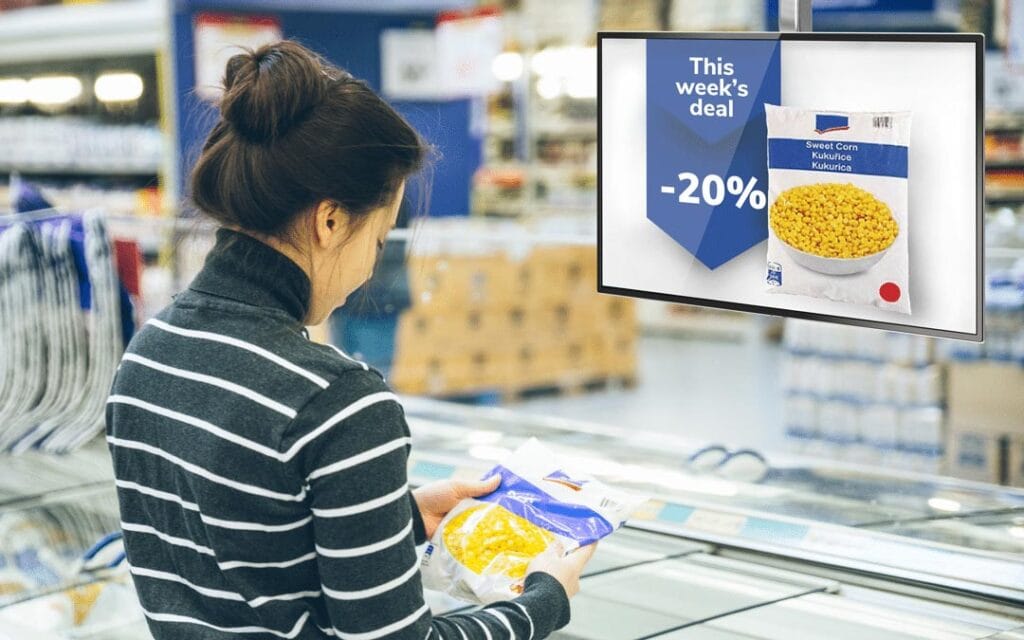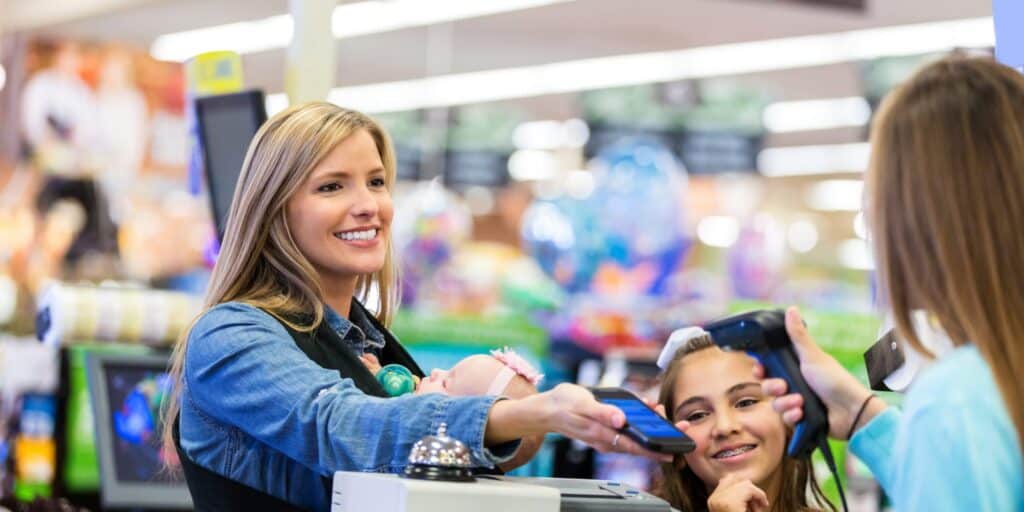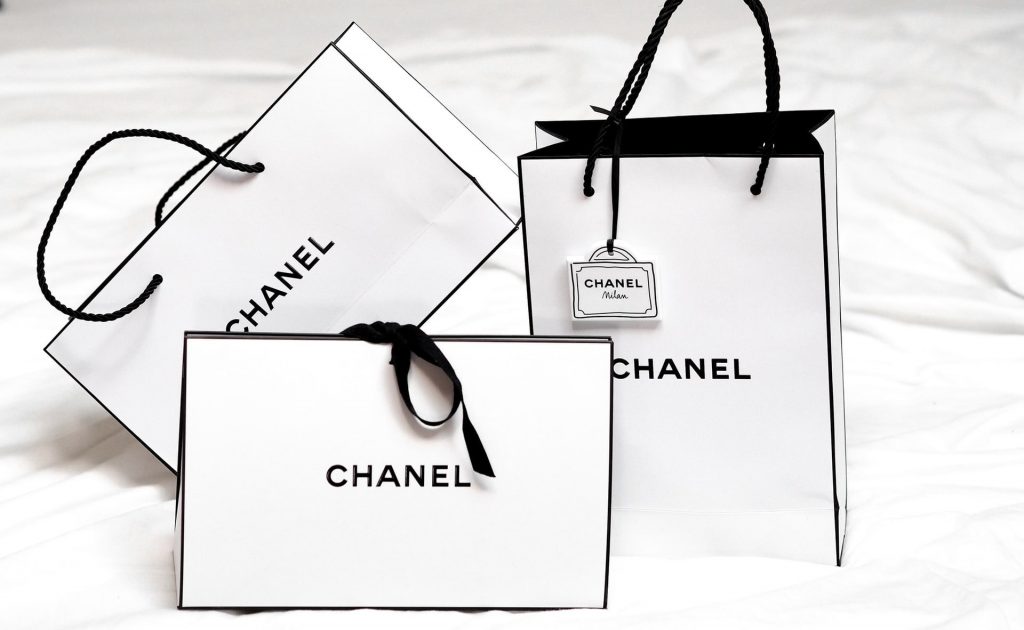Impulse Buying: What Drives Impulsive Purchases?
Can you resist purchasing something you don't need? Here's why you grab items in checkout lines and how to curb impulse buying.
Table of Contents
What is Impulse Buying?
Impulse buying happens when we add unplanned items to our carts on the spur of the moment. Consider the tubes of lip balm, rolls of breath mints, and packs of gum we grab at the register when checking out at a store or online. Feeling that adrenaline rush when adding an unplanned teapot or throwing a pillow to our digital carts counts as impulse buying.
The Basics
Impulse purchases are:
- Spontaneous
- Fun
- Unnecessary
- Driven by emotions vs. logic
We've all been there – you did not intend to buy the box of chocolates or fluffy dog toys. Still, something about those items called to you, igniting a desire to buy them then and there. Such impulse purchases happen all the time in brick-and-mortar stores and online shopping.
What Triggers Impulse Buying?

Multiple factors can turn us from responsible shoppers into impulsive buyers, grabbing items on a whim. The setting matters far more than you may realise regarding impulse purchases. Store setups and product displays tempt us to buy compulsively. Online stores utilise tools and sales tactics to encourage impulse buying as well.
In Physical Stores
Brick-and-mortar retailers rely heavily on behavioural consumer analysis of shopper habits and psychology. Store layouts, music, lighting, and more all subtly push us towards impulsive spending.
Product Placement – Items displayed near checkout counters or the aisle's front/middle trigger impulse buying. We grab candy by the registers when our willpower is lowest as we wait to pay. Bright, eye-catching midpoint displays easily divert our attention.
Colour & Scent – Vibrant colours subconsciously attract shoppers. Soothing scents like vanilla or lavender relax us and make us feel comfortable spending more time (and money) in stores.
Music & Lighting – Like scent and colour, background music influences buyers. Slower tempo songs lengthen shopping times and encourage leisurely impulse browsing. Bright lighting and spotlights highlight tempting goods we did not need.
Sales & Bulk Deals – Buy-one-get-one and bulk rate deals tempt us with perceived savings on items not on our lists. Our minds trick us into justifying bulk purchases as great deals, driving impulse consumption.
Online Tricks
E-commerce stores utilise carefully honed tools and tactics to encourage impulse buying behind our screens. Two key reasons it is easier to overspend online are:
Anonymity – Online shopping allows us to browse and buy items conveniently without judgment. There is no peer pressure when adding ten throw pillows to your cart virtually versus standing in a store aisle.
Accessibility – Our computers and phones offer 24/7 access to stores worldwide. It takes a few clicks or taps when the impulse strikes the time to shop. No closing hours are limiting online spending sprees.
Common impulse buying triggers digital retailers rely upon include:
- One-click ordering removes friction and extra decision points between desire and purchase
- Persistent carts showing abandoned items whenever we return
- Recommended for you sections based on browsing or purchase history
- Limited-time promotions with ticking countdown clocks
- Free and fast shipping minimising perceived costs
- Easy returns removing risk and guilt of bad buys
Most Problematic Categories for Impulse Purchases
Some categories tend to enable out-of-control impulse buying more than others especially. A few trouble categories include:
Clothing & Shoes – Trendy, discounted, or limited-release garments and footwear commonly fall prey to impulse purchases. When facing a cute dress or coveted sneaker drop, our emotions easily overcome logic.
Food & Snacks – Hungry shoppers often grab unplanned snacks, junk food, and prepared meals while shopping. Impulse food buys happen even without hunger when spotting deals or seasonal/unique treats.
Housewares – Decorative furnishings like scented candles, floral arrangements, and luxurious bedding quickly end up in baskets on a whim. Unique kitchen gadgets also tempt impulsive purchases despite limited utility or need.
Cosmetics – Makeup shopping brings out impulses to try hot new products, limited editions, or prestige brands. When browsing beauty aisles, the same goes for skincare, fragrance, nails, and hair care.
Books & Media – Browsing bookstores and recommendations algorithms on entertainment sites lead media lovers towards impulsive buys. Fantastic cover art, exclusive editions, or binge-worthy-looking DVD sets call our names at high rates.
Toys & Novelties – Kids (and kids at heart) struggle to pass up trendy toys, games, puzzles, and novelty items spotted in impulse purchase territory. Anything colourful, squishy, or noisy sets off must-have mental alerts.
What Drives Impulse Purchases?

You now know common in-store and online impulse-buying triggers retailers utilise. But what internal forces drive consumers towards impromptu purchases in the first place? Understanding those psychological and emotional factors is critical to controlling impulse spending.
Psychology Behind Impulsivity
Human behaviour and neurology predispose us towards impulsive choices by default. We have to apply self-control to overcome innate impulsiveness intentionally.
The Craving Mind & Brain – Neurotransmitter activity regulates our moods, desires, and compulsions. Dopamine reinforces pleasure-seeking behaviours—low serotonin links to poor impulse control.
Ego Depletion – Our willpower resembles a limited daily resource. Once ego depletion sets in after much decision-making, we default to impulses.
Convenience Over Control – Self-regulating behaviour requires effort. Our minds gravitate towards whatever is most accessible – like impulsive purchases.
Fear of Missing Out (FOMO) – Anxiety drives hasty purchases when opportunities seem scarce or there is limited time. FOMO rushes impulse buying to avoid regret.
Emotions Fueling Splurges
Even without retail triggers, the right mood leaves us vulnerable to impulse buys. Boredom, stress relief seeking, anticipation, and more drive terrible buys.
Boredom Buying – Loneliness, lethargy and lack of stimulation send people shopping. Filling time and getting a rush from finding/buying things brings enjoyment.
Retail Therapy – For some, shopping relieves stress after a bad day or complex life events. Soothing impulse purchases provide emotional comfort.
Anticipation & Excitement – Looking forward to events like trips, parties, or big game days fuels impulse item grabs as part of the pre-fun. Limited releases also generate anticipatory enthusiasm, directing impulse spending.
Ambience & Mood – Atmospheres conducive to leisurely browsing put us in the perfect mindset for impulse buys. Soothing music, aromatic candle aisles, art gallery vibes, etcetera invite wandering attention.
Peer & Cultural Pressures – Trying to project images matching peers' and cultural preferences leads to impulsive appearance-based purchases. Social comparison fuels keeping up appearances via unplanned buys.
Sensory Delights – Beautiful packaging, savoury smells, pleasant textures, or touching products drive those unthinking grabs. Retailers intentionally trigger sensory joys, luring impromptu purchases.
Gifting Inspiration – Finding perfect surprise gifts or spotting items reminding you of loved ones also sparks impulsive spending. Retailers market to this emotional gifting impulse frequently.
Impacts of Impulse Buying

You likely assume impulse buying simply means wasting money on minor extra purchases here and there. Not so! Frequent impulse buying correlates to far more significant financial and psychological consequences than you may expect.
Financial Impacts
Despite individually representing minor costs, small impulse purchase expenditures increase alarmingly over time.
Reallocation of Funds – Money directed towards unplanned discretionary purchases cannot go towards planned spending or savings goals. Impulse buying commonly short-changes priority financial commitments.
Interest & Fees – Relying on credit to fund impulse buys means paying financing charges and cutting into budgets further. High-interest credit card debt compounds those effects.
Wasted Spending – Up to 1 in 5 impulse buy items may go unused after purchase. Others lose appeal fast. Squandering funds on short-lived goods builds up.
Opportunity Costs – Every dollar allocated to unnecessary impulse purchases forfeits potential alternate uses, earning more significant rewards. Prioritising gratification ignores maximising that capital down the road.
Psychological Impacts
Impulse buying habits also correlate with and exacerbate problematic mindsets and mental health disorders.
Addiction – Just like substances, gambling, or other vices, shopping can become an addictive dependency for some people. The momentary excitement of impulse buys offers a potent draw for quickly hooked minds.
Compulsions – Impulse control disorders and obsessive compulsions may find outlets via excessive shopping—irresistible urges to purchase manifest as unstoppable buy-now fixations.
Anxiety & Depression – Retail therapy attempts often temporarily ease anxiety but ultimately worsen mood disorders long term. The spiral is frequent, with spending binges bringing more guilt and stress.
Low Self-Esteem – Negative self-image and lack of confidence fuel appearances-based impulse buys. Pursuing visible signals of prestige or a desirable identity overrides financial prudence.
Nostalgia – Sentimentality and peak experience chasing also power impulse buying. Material purchases aim to recapture comforting memories or match past emotional highs.
FOMO (Fear of Missing Out) – The anxiety of feeling behind trends or less fortunate shows as status signalling and social comparison purchases. Impulse buys feed endless FOMO cycles.
Dopamine Fixes – Addictive personalities compulsively chase impulse buys as rapid dopamine bursts. But each hit requires bigger splurges, like substance tolerance building up.
Poor Coping Habits – Stressed and distressed moods commonly trigger avoidance and relief-seeking via impulse buys. Shopping serves as a substitution for addressing core issues.
Decluttering Dilemmas – All those unneeded impulse buys stack up, requiring time and effort to handle. Choice paralysis stalls decisively sorting and selling the excess stuff.
Managing & Curbing Impulse Buying
Understanding why, how, and when impulse buying happens clarifies why gaining control matters. But realistically, how do regular consumers rein in those irresistible spending impulses? Start by trying these doable impulse-buying cures:
Avoid Triggers
- Stay out of stores when bored or upset
- Unsubscribe from promotional emails
- Hide one-click buy buttons
Utilise Friction
- Disable auto-save payment
- Delete stored card data
- Require multi-step ordering
Exercise Self Awareness
- Notice impulse cues like cravings
- Identify trigger situations
- Track frequent impulse buy categories
Prevent Access in Moments
- Block sites on devices
- Use website-blocking tools
- Leave the debit card at home
Practise Mindful Shopping
- Always use shopping lists
- Stick to planned purchases
- Pause and double-check before purchase
Get Accountability
- Share habits with trusted friends
- Invite shopping buddy
- Seek financial counselling
Fund Alternate Rewards
- Save up splurge allowances
- Budget for real needs first
- Bank impulse monies
While reducing spontaneous purchases may take conscious practice, the financial and psychological dividends make impulse control worth striving for. Start noticing those impulsive urges today and gradually implement more intelligent shopping strategies. With some thoughtful tactics, balancing occasional fun impulse buys amid responsible spending habits becomes much more feasible in the long term.
Frequently Asked Questions About Impulse Purchases
Still, seeking more impulse shopping and spending clarity? Here are answers addressing some other common inquiries:
What percentage of purchases are impulse buys?
Research suggests unplanned impulse purchases make up around 30% to 60% of all shopping trips. Experts estimate the average shopper spends over $5,000 annually on impulse buys.
Are impulse purchases bad?
Not necessarily. An occasional small impromptu purchase here brings little harm. But repeatedly spending beyond budgets on unneeded items invites financial issues and psychological risks in the long haul.
How can I stop myself from impulse buying?
The best impulse control tactics involve adding friction, avoiding triggers, establishing accountability measures, and budgeting discretionary splurge allowances. Building more mindful shopping habits and awareness of vulnerabilities also helps curb impulsive spending overruns.
What are three examples of impulse buys?
Three prime examples of common impulse purchase categories include snack foods added when checking out, spontaneous clothing purchases, and unplanned decorative home goods finds filling the virtual cart. Grabbing a candy bar at the register, selecting a cute dress spotted on the rack, or clicking fast on a scented candle to purchase typify impulse buying in action.
Why do stores tempt you to buy things you don't need?
Retailers intentionally utilise meticulous store layouts, sensory marketing tactics, product promotions and placement; all optimised to encourage shoppers to add extra unplanned purchases. Those incremental impulse buys make up valuable additional sales volume for savvy companies. Put simply, tempting consumers equals more significant revenues.
